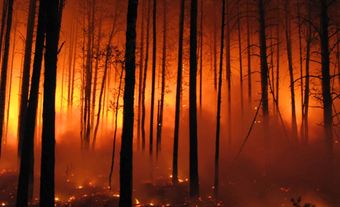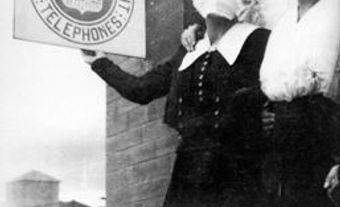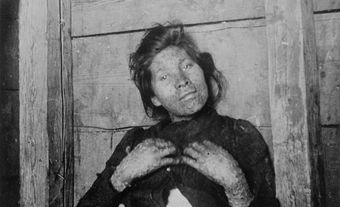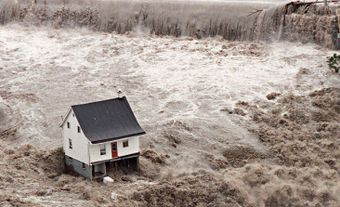The most damaging pandemic of influenza — for Canada and the world — was an H1N1 virus that appeared during the First World War. Despite its unknown geographic origins, it is commonly called the Spanish flu. In 1918–19, it killed between 20 and 100 million people, including some 50,000 Canadians.

Why Was the 1918 Pandemic Commonly Called the “Spanish” Flu?
The name Spanish flu emerged as a result of media censorship by the military in Allied countries during the First World War. These countries suppressed public reports of the viral infection and the death of soldiers. However, in Spain, which was neutral during the war, the media was able to widely report the high incidence of death from the illness. The virus became associated with Spain as a result.
The origins of the pandemic are debated. Four locations are often considered the source of the initial outbreak: England, France, China or the United States.
How Did the 1918 Flu Differ from the Regular Flu?
Unlike most strains of influenza, which are dangerous for those with reduced immunity (e.g., the elderly, the very young and those with pre-existing conditions), the 1918 flu tended to kill the young and hearty. Pneumonia contracted by a patient weakened by influenza, rather than influenza itself, was the major cause of death. A long-term consequence for some victims was the development of a parkinsonian syndrome, including a marked tremor.
How Did the Flu Spread in Canada?
The 1918 flu pandemic arrived in Canada with returning troops and made its way into even the remotest communities. Some entire villages were wiped out by the disease. Labrador, Quebec and First Nations reserves were particularly hard hit. Some areas unsuccessfully tried quarantine. All medical facilities and personnel were soon overtaxed and volunteers organized infirmaries in schools and hotels.

What Was the Impact of the 1918 Flu Pandemic in Canada?
The pandemic brought not only death but social and economic disruption as well. Children were left parentless and many families found themselves without their chief wage earner. Armies on both sides of the First World War were temporarily debilitated. Businesses lost profits because of lack of demand for their products or because they were unable — as a result of a reduced work force — to meet the demand. Municipal governments, in an attempt to halt the spread of the disease, closed all except necessary services. Provinces enacted laws regarding quarantine and enforced the wearing of masks in public. Although the Canadian population unhappily accepted these restrictions, it defied the federal government’s request that First World War victory celebrations be postponed until 1 December 1918. The establishment of the federal Department of Health in 1919 was a direct result of the Canadian epidemic.
The influenza strain, although decreasingly virulent, remained active in Canada until the mid-1920s. It has since been identified as an H1N1 virus (see also H1N1 Flu of 2009 in Canada).

 Share on Facebook
Share on Facebook Share on X
Share on X Share by Email
Share by Email Share on Google Classroom
Share on Google Classroom









